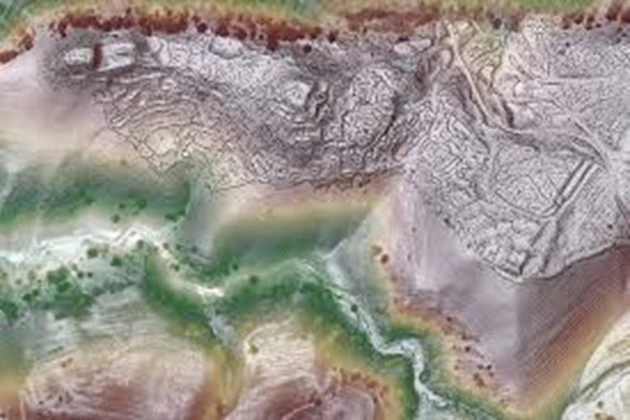The existence of ancient cities on the territory of Uzbekistan has been known for a long time. Mention of them is found in the ancient chronicles of the Acadian period. However, due to the erosion of the earth’s crust, they were hidden underground for many centuries and were considered long lost. However, in 2011, traces of them were accidentally discovered, and four years later, archaeological excavations began using new technology to shed light on their history.
A fantastic discovery in the highlands of Uzbekistan, made with the help of modern technology
This sensational discovery occurred in 2011 when archaeologists searched for traces of nomadic cultures in the rocky mountains of Uzbekistan and did not expect to find the remains of a medieval city hidden under the earth. The ancient stone ruins were discovered accidentally at an altitude of two thousand meters due to modern laser detection technologies and the determination of the range or depth of occurrence in the ground.
In 2015, archaeological excavations began in this area, and scientists discovered another city, only three kilometers from the first, also at a high altitude in the mountains. Visit . A F R I N I K . C O M . The height of two thousand meters is considered extreme for living even today, and judging by the excavations; these cities once represented busy centers where the lives of thousands of people were in full swing.
Scientists named one of them Tugunbulak, a large metropolis with an area of at least 120 hectares. The second, Tashbulak, was smaller in size and located on about 15 hectares.
According to scientists, Tugunbulak was two centuries older than Tashbulak; its heyday fell in the middle of the VI century, while Tashbulak was inhabited by people only since the VIII century. Both cities existed until about the 10th century.
The discovery makes adjustments to the traditional ideas about the Silk Road
The discovery of these ancient cities significantly altered humanity’s knowledge of the Silk Road and how its trade routes passed through Central Asia’s mountainous, rugged terrain.
Historically, the Silk Road, which runs between East and West, has played an important role in mankind’s evolution, facilitating the exchange of goods, technologies, and ideas. The cities located on this route were economically more developed. Still, with the development of maritime trade routes, many of them fell into disrepair or were abandoned due to food shortages or the outbreak of epidemics.
Previously, it was believed that trade routes passed mainly through the lowlands, avoiding the intersection with the mountainous regions of Central Asia. However, this discovery has shown that this view is incorrect. During the excavations carried out in Tugunbulak and Tashbulak, evidence was found that these cities were important trading centers on the Silk Road, and, consequently, their routes were more extensive than previously thought, including in the mountains.
A rich cultural heritage buried in time
According to archaeologists, the most challenging thing was convincing the academic community of the existence of these ancient cities. Many finally doubted that a large city’s ruins rested in the earth’s thickness. However, when the area was re-scanned using LiDAR technology and detailed terrain maps were compiled, the remains of houses, squares, and other structures were marked, doubts disappeared, and excavations began.
During the first archaeological work in Tugunbulak, archaeologists immediately encountered the ancient city’s walls, watchtowers, and other complex architectural elements after removing the soil layers. Fragments of medieval ceramics were also discovered, indicating the rich cultural heritage of an ancient civilization.
According to scientists, settlements at a high altitude can be explained by the fact that this region is rich in iron ore. Iron ore was used to produce iron and was offered as a highly valued commodity then. Furnaces and ancient coins discovered during excavations indicate the role of these cities as shopping centers.
Archaeological excavations in these places have just begun, and scientists hope that the rich cultural heritage of Uzbekistan, buried in time, will become available for studying history and re-evaluating its significance.
